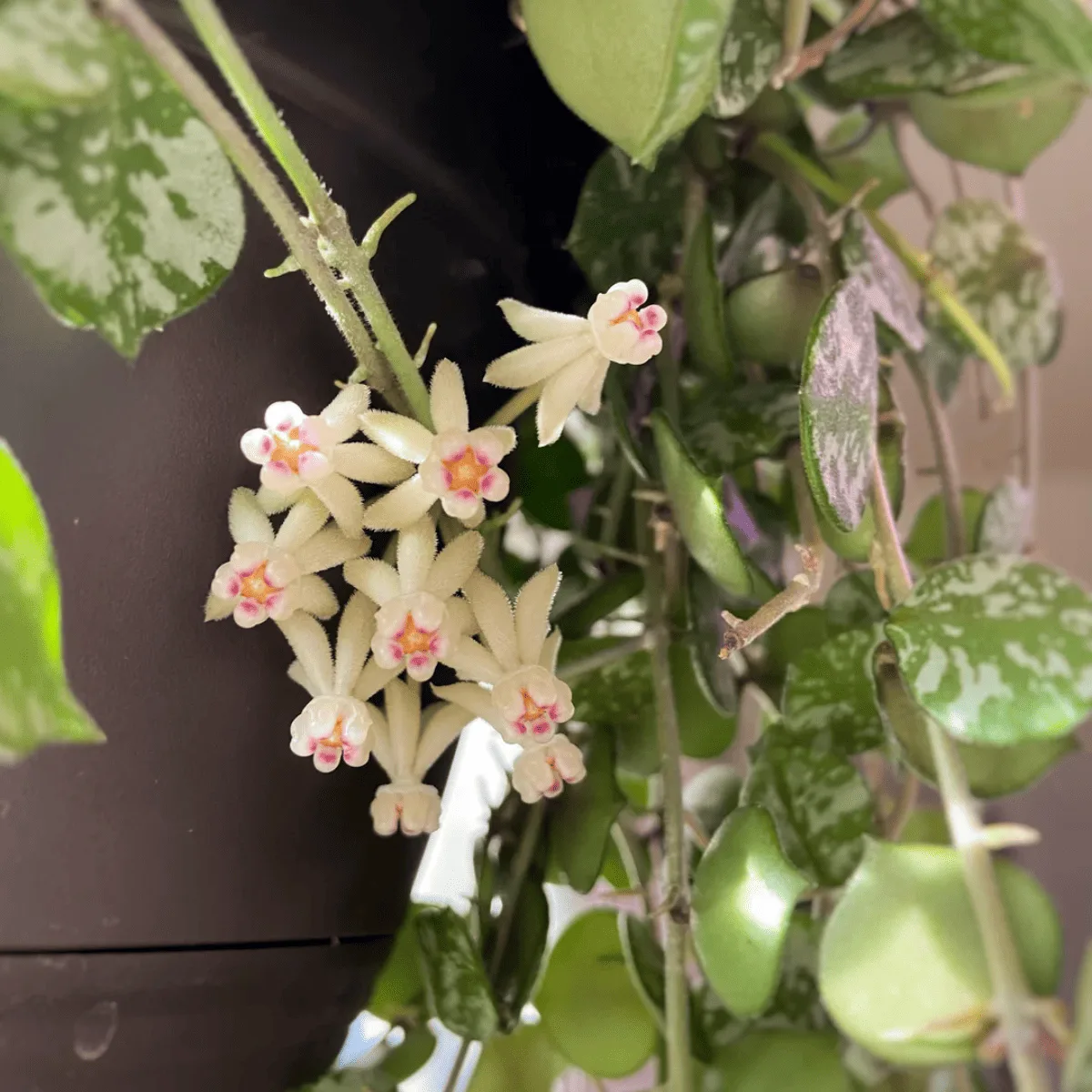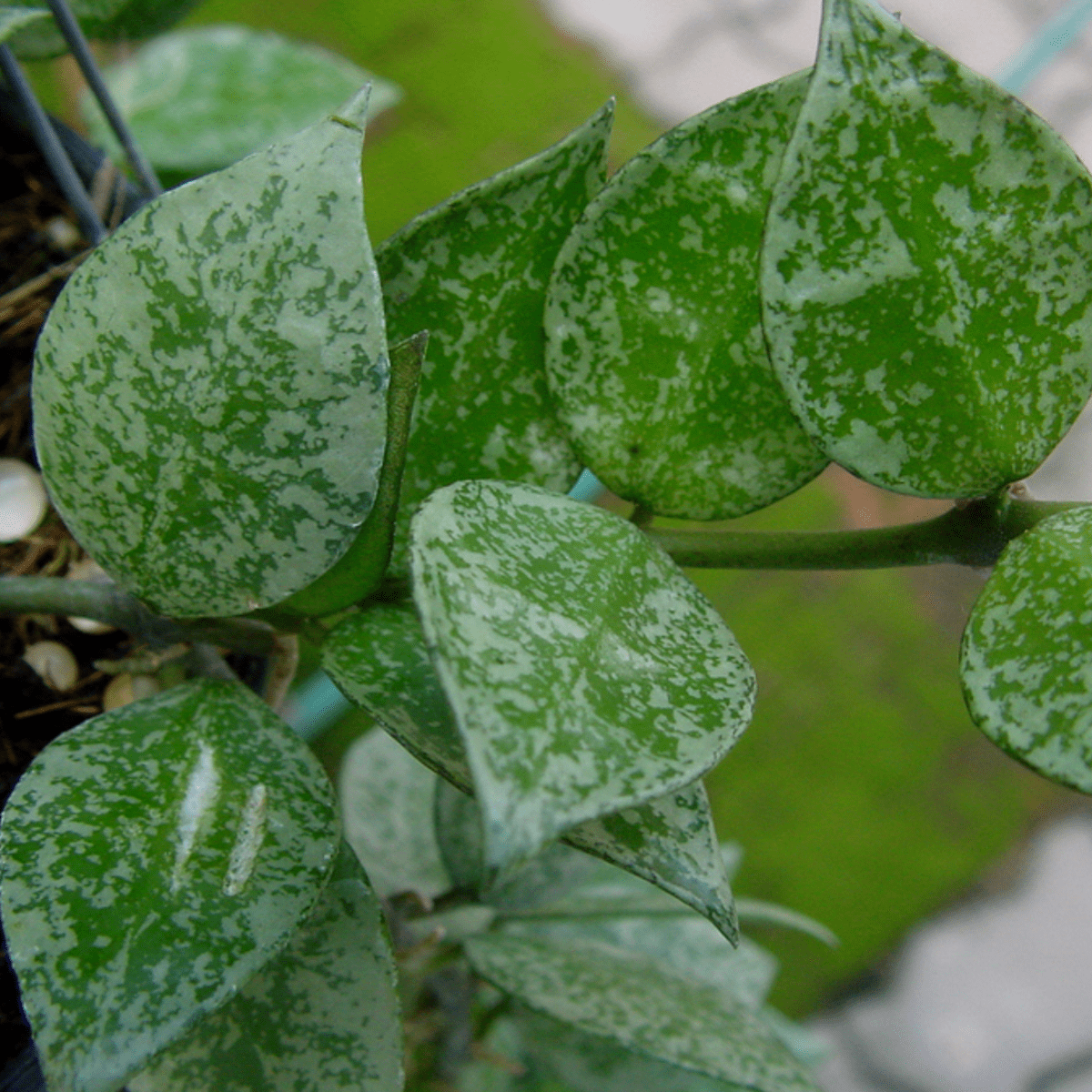Hoya Curtisii is a low-maintenance plant known for its stunning, heart-shaped leaves. To care for this unique beauty, provide bright, indirect light, well-draining soil, and water when the top inch of soil is dry. With the right care, Hoya Curtisii can thrive, adding a touch of elegance to your plant collection.
In this article, we’ll explore everything there is to know about Hoya curtisii care, from its origins and key features to how to provide optimal care. We’ll also address common issues and frequently asked questions about this plant. Whether you’re new to Hoyas or a seasoned enthusiast, this guide will help you grow a healthy, flourishing Hoya curtisii.
What is Hoya Curtisii?
The Hoya curtisii is a slow-growing, epiphytic plant that is native to Southeast Asia, including Malaysia, the Philippines, and Thailand. Unlike many other Hoya species that have large, waxy leaves, Hoya curtisii is characterized by its small, heart-shaped leaves that are speckled with silver. Its trailing vines make it perfect for hanging baskets or trailing over the edge of shelves or containers.
While Hoya curtisii isn’t the fastest grower, it’s a rewarding plant for those who appreciate its compact size and unique foliage. Like other Hoyas, it can also produce flowers, although they are smaller and less frequent than some of the more common species like Hoya carnosa.
Key Features of Hoya Curtisii
Before we dive into specifics on how to care for the Hoya curtisii, let’s take a look at some of the key characteristics that make this plant special:
- Small Leaves: The leaves of Hoya curtisii are small, heart-shaped, and have a mottled silver pattern on the surface. This gives the plant a delicate, almost ornamental appearance.
- Trailing Growth: This Hoya grows as a trailing plant, making it ideal for hanging baskets or as a cascading feature over shelves.
- Epiphytic Nature: In the wild, Hoya curtisii grows on trees and other surfaces, absorbing moisture from the air and its surroundings.
- Flowers: While the flowers of this plant are not its main feature, they can bloom in clusters of tiny, star-shaped flowers. These blooms are often light green with a pinkish hue and are mildly fragrant.

How to Care for Hoya Curtisii
*Caring for *Hoya curtisii* isn’t difficult, but it does require attention to specific environmental factors like light, humidity, and watering. Here’s a detailed breakdown of how to keep your Hoya curtisii thriving:
1. Light Requirements
Hoya curtisii prefers bright, indirect light. Like many Hoyas, it can tolerate lower light conditions, but this will often result in slower growth and fewer flowers. Too much direct sunlight can scorch the leaves, causing them to lose their distinct silver speckles and turn yellow or brown. A spot near an east or north-facing window is ideal, where it can receive plenty of filtered sunlight without exposure to harsh, direct rays.
2. Watering Needs
One of the most important aspects of Hoya curtisii care is proper watering. This plant prefers slightly moist soil but is highly sensitive to overwatering. Always allow the top inch or two of soil to dry out before watering again. Overwatering can quickly lead to root rot, which is a common issue with Hoyas. During the winter months, reduce the frequency of watering, as the plant will be in a period of slower growth.
3. Humidity
Being a tropical plant, Hoya curtisii thrives in higher humidity. Aim for humidity levels of around 50-60%, but this plant can adapt to average indoor humidity levels. If you live in a particularly dry environment, consider increasing humidity by misting the plant, using a humidifier, or placing it on a tray filled with pebbles and water to increase the moisture in the air around the plant.
4. Temperature Preferences
Hoya curtisii prefers warmer temperatures, ideally between 65°F and 80°F (18°C to 27°C). It does not tolerate cold temperatures well, so avoid exposing it to drafts or temperatures below 50°F (10°C). If you are growing the plant outdoors in warm months, be sure to bring it inside when temperatures start to drop.
5. Soil and Potting Mix
The key to keeping your Hoya curtisii healthy is a well-draining soil mix. Like other epiphytic plants, it prefers a light, airy mix that doesn’t retain too much moisture. A combination of orchid bark, perlite, and peat moss or coco coir will work well. Avoid using heavy potting soils that trap water, as this can lead to root rot.
6. Fertilizing
Feed your Hoya curtisii with a balanced, water-soluble fertilizer once a month during the growing season (spring and summer). Dilute the fertilizer to half strength to avoid overfeeding, which can cause salt buildup in the soil. During the fall and winter months, you can reduce or stop fertilizing altogether, as the plant’s growth will slow down.
Pruning and Maintenance
Pruning
Pruning your Hoya curtisii is not strictly necessary but can help control its shape and encourage fuller growth. Trim back any leggy or unruly vines to keep the plant compact and tidy. To avoid injuring or damaging the plant, it is always advisable to use clean and sharp scissors.
Encouraging Blooms
While Hoya curtisii is primarily grown for its foliage, it can produce flowers if given the right conditions. To encourage blooms, make sure your plant is receiving enough bright, indirect light and is slightly root-bound. Hoyas tend to bloom better when they are a bit pot-bound, so avoid repotting too frequently.

Propagating Hoya Curtisii
Propagation of Hoya curtisii is relatively easy and can be done through stem cuttings. Here’s how to propagate this plant:
- Take a Stem Cutting: Select a healthy vine and use clean scissors to cut a section with at least two nodes (where leaves attach to the stem).
- Rooting in Water or Soil: Place the cutting into a glass of water or directly into moist soilthat drains well. In case you root it in water, change the water every few days to keep it fresh.
- Provide Proper Conditions: Place the cutting in a warm, humid environment with bright, indirect light. If rooting in soil, keep the soil slightly moist but not waterlogged.
- Transplant: Once the cutting has developed roots (this can take several weeks), it can be transplanted into a small pot with a well-draining soil mix.
Common Problems and How to Fix Them
1. Yellowing Leaves
Yellow leaves are often a sign of overwatering. Make sure that the soil is allowed to dry out between waterings and that the plant is in a pot with proper drainage. If the yellowing persists, check the roots for signs of rot and trim away any affected parts before repotting the plant in fresh soil.
2. Leaf Drop
If your Hoya curtisii is dropping leaves, it could be due to inconsistent watering or exposure to cold drafts. Ensure that the plant is kept in a stable environment with consistent temperatures and watering.
3. Lack of Growth
Slow growth is normal for Hoya curtisii, but if the plant isn’t growing at all, it may not be receiving enough light. Try moving it to a brighter location with indirect sunlight and ensure that it has plenty of humidity.
Conclusion
Hoya curtisii is a beautiful, trailing plant with unique foliage that can add a touch of elegance to any indoor space. While it may not be the fastest grower, its small, heart-shaped leaves and cascading vines make it a favorite among plant enthusiasts. By providing the right conditions—bright, indirect light, moderate watering, and plenty of humidity—you can enjoy a thriving Hoya curtisii in your home for years to come.
FAQ
Water your Hoya curtisii when the top 1-2 inches of soil are dry. This usually means watering every 1-2 weeks, depending on the humidity and temperature in your home.
Yes, Hoya curtisii prefers higher humidity levels (around 50-60%), but it can adapt to average indoor humidity. Increase humidity if the air in your home is particularly dry.
Yellow leaves are often caused by overwatering. Ensure the plant has a well-draining soil mix and allow the soil to dry out between waterings.
To encourage blooms, make sure your plant receives plenty of bright, indirect light and is slightly root-bound. Avoid repotting too frequently, as Hoyas tend to bloom better when their roots are a bit constrained.
You can grow Hoya curtisii outdoors during warm months, but it should be brought inside when temperatures drop below 50°F (10°C). Make sure it is placed in a shaded area to avoid direct sunlight.

